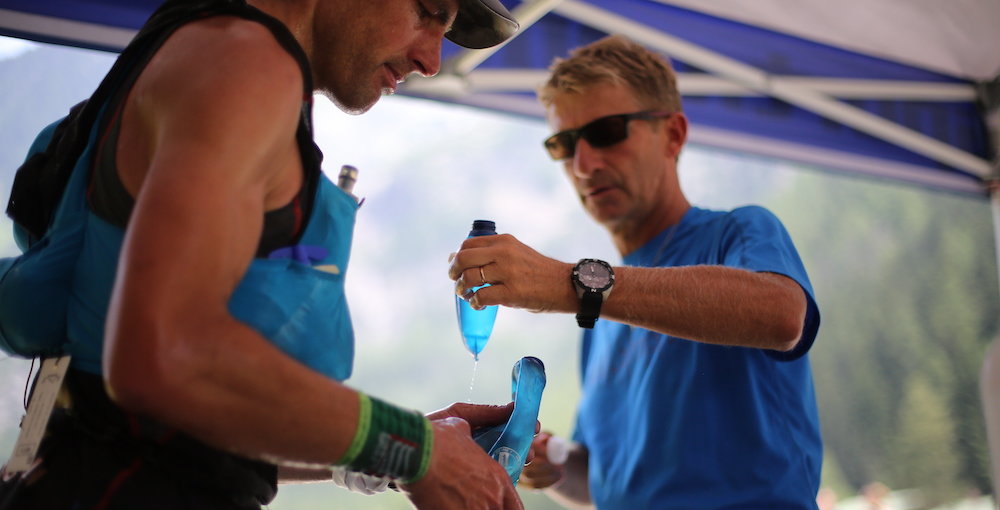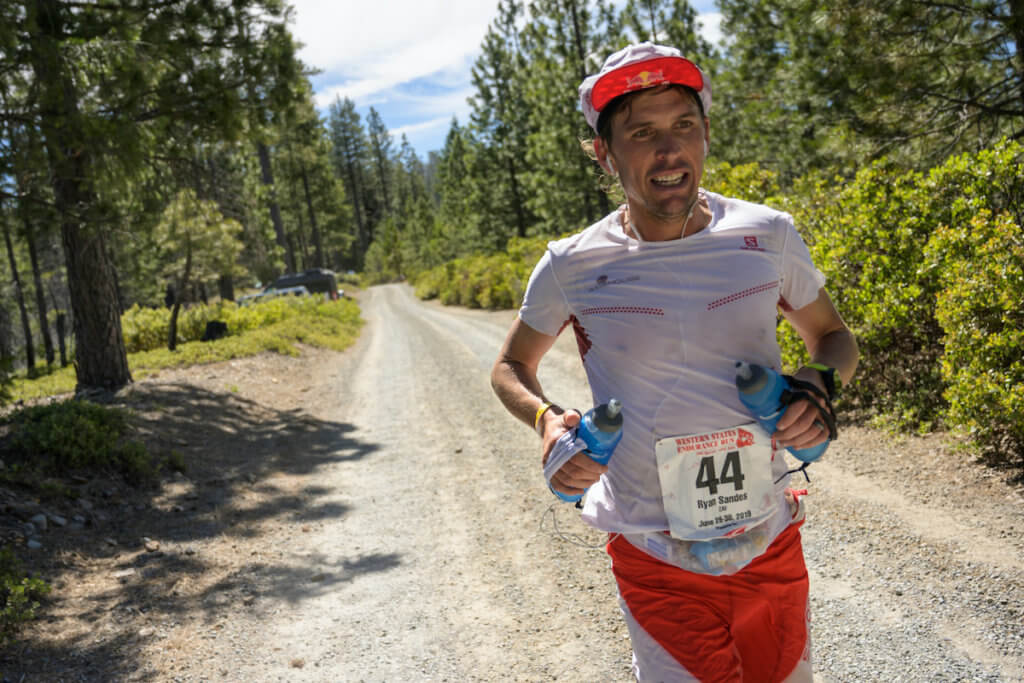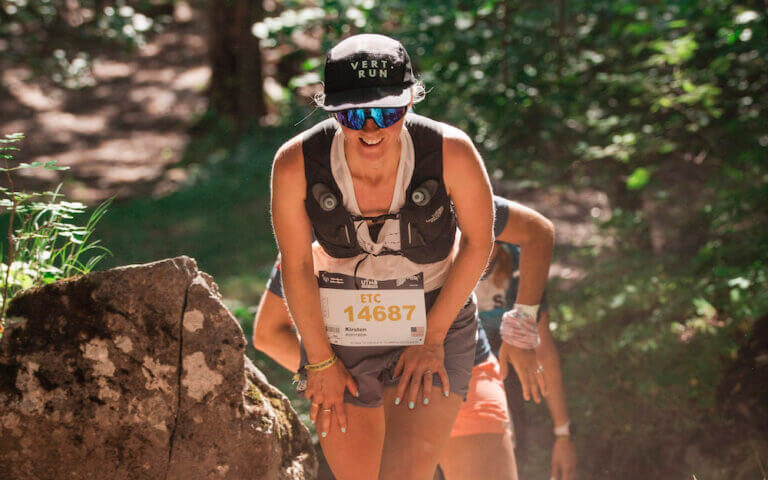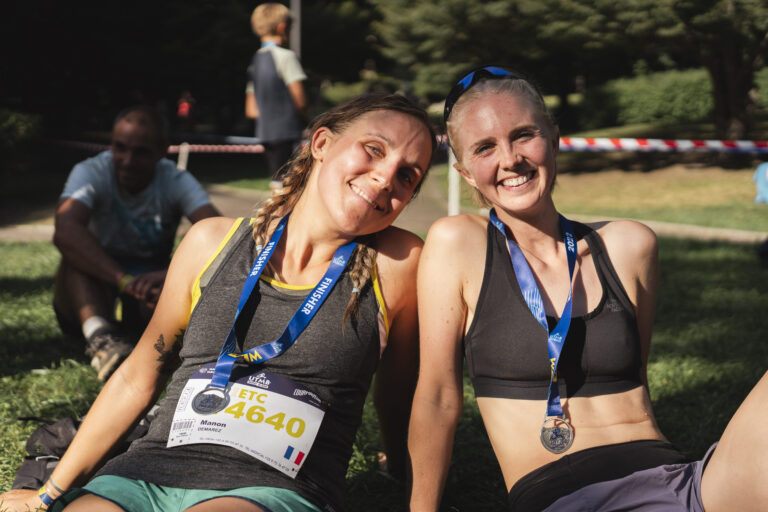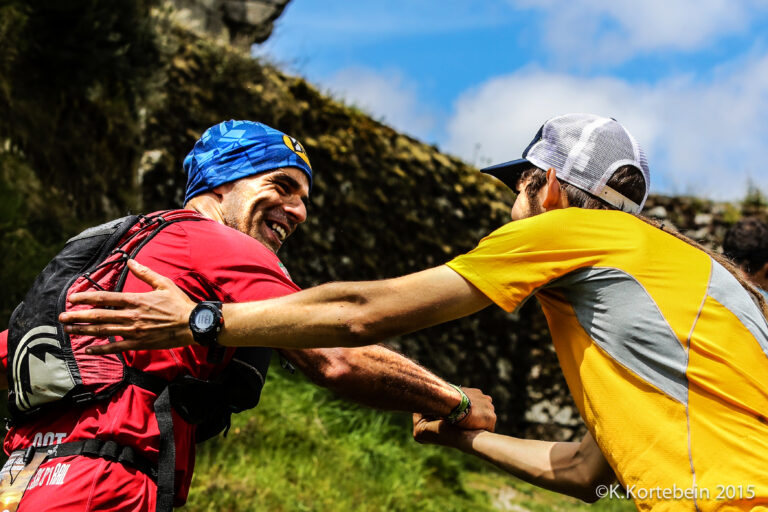Can I run a Marathon or even an Ultramarathon on a keto diet?
If you’re here today, you probably have lots of questions about ultramarathons and Ultrarunning on a keto diet. The keto diet is something that a lot of runners–and ultrarunners–have either tried in the past, or are considering trying. As trail and ultrarunners, we’re often concerned with our health, and how our diet can impact our running performance. That’s why we’ve put together this comprehensive guide on how to run ultramarathons on a keto diet…and more importantly, we also walk you through what a keto diet is, and will help you try to determine if a keto diet could be right for you.
We’ll dive pretty deep into keto diets and ultrarunning in this article–but to get straight to the point right off the bat, here are the answers to the two questions you’re probably most asking yourself about Ultrarunning on a keto diet:
Question: Is it easy to run ultramarathons on a keto diet?
Answer: It depends on how fat-adapted you are. (Don’t know what this means? Don’t worry, we’ll get into it more later!)
Question: Is it worth it?:
Answer: Maybe. (Like all things diet-related, each person is different. In this article, we’ll help you walk through the pros and cons of ultramarathons and ultrarunning on a keto diet, and help you determine if it could work for you.)
So. Let’s dig in.
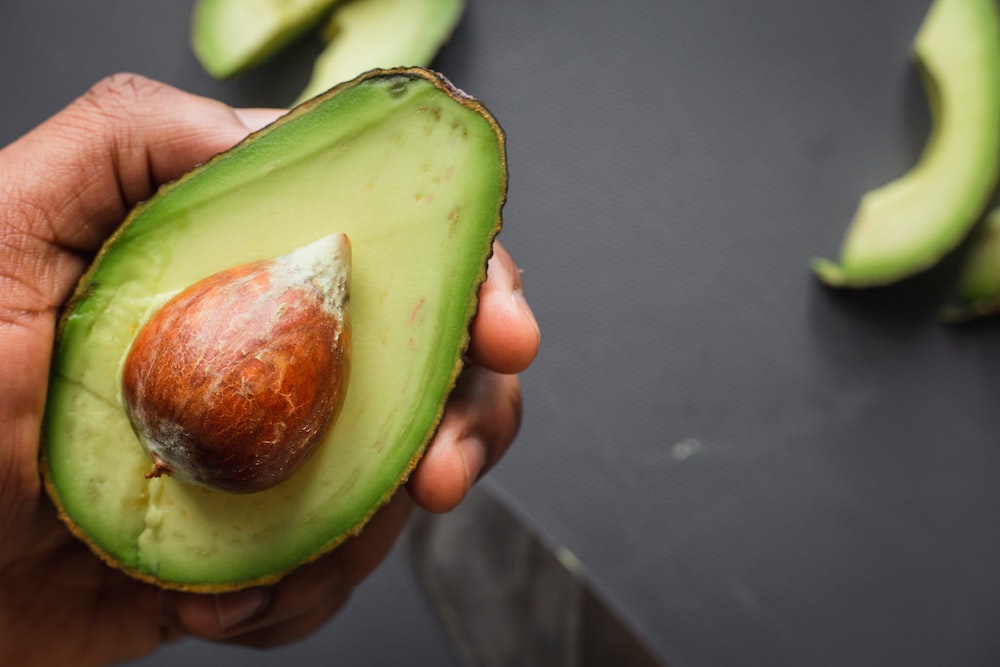
Now, first of all: what is a keto diet?
So, a keto diet (short for Ketogenic) is basically a type of diet that aims to make your body as efficient as possible at using fat as the primary source of energy for your daily life (as opposed to carbs, which are generally the source of energy in a more traditional, Western diet.)
And how does a keto diet make your body more efficient?
Basically, a keto diet aims to lower your consumption of carbohydrates down to 5-10% of your total daily calories (or 25-35 grams of carbs a day) by adding more fat to your diet (up to 75% of your total calories for a day.) This then forces your body to enter into a “ketosis state,” in which it starts burning fat as its source of fuel. Since the body can’t rely on its favorite source of energy–glucose–it starts producing and using ketones, which are a type of acid that the liver produces from stored fat, as the fuel for your muscles and other tissues¹.
So, what about Ultrarunning on a Keto diet?
Nowadays, a “normal” diet has us consuming somewhere between 180 to 300 grams of carbs per day (and as you probably know, it can be more if you’re in the middle of a really heavy training block for a trail race or ultramarathon.) This means that 70-80% of our daily calories come from carbs. These carbs come from all the foods that are common in many of our diets: like, pasta, rice, potatoes, bread, anything sugary, fruits, sodas, etc.
So, by drastically lowering the amount of carbs that we eat (basically bringing that number as low as possible) and increasing the amount of fat (and a little bit of protein too,) we force our body to become a fat-burning machine.
And that’s it. A keto diet is basically: stop eating what you’re probably eating right now, and swap out all those carbs to make fat your primary source of daily calories.
But trust us. It sounds way easier than it actually is. (Yep, you read that right. Sounds easier. It’s pretty hard.)

Keto Ultrarunners: athletes who follow a keto diet
Today, there are a lot of examples of great athletes who swear by keto diets, and even run ultramarathons on a keto diet, specifically endurance athletes. In the trail running world, the two best examples of ultrarunners who follow a keto diet are probably Bronco Billy (aka Jeff Browning) and Zach Bitter.
Both Jeff and Zach are solid runners with great results, especially when running longer stuff (like 100 miles, or 24-hour efforts, on trails and more runnable courses like tracks) so if you’re looking for some reference points in the ultrarunning community, they’re both great athletes to follow–especially if you want to see some concrete examples of how a keto diet fits into running really long distances.
Discover our training plans–designed by the best ultrarunners in the world.
Training plan + 1x weekly coaching for just $6 USD/ week.
So let’s start with: Should I try a keto diet?
First of all, we need to start off by saying that no diet is a magic wand, and that every diet fits each person differently. We are also not doctors, and this is not at all meant as medical advice. You should always talk to your primary physician before starting any new diet, especially as an ultrarunner or endurance athlete.
Each person, and each runner, is different–and what works wonders for one runner may be impossible to replicate for another. So, really make sure that you don’t get peer pressured into trying a keto diet. Secondly, don’t fall into the trap of thinking that a keto diet will make you an elite runner (with “elite times”) just by being in a ketosis state every day. Actually, the opposite could very well be true: it may even slow you down, at least at first.
Once again, even though you might find some great examples of pro athletes on a keto diet, this doesn’t mean it’ll do the same for you…so we encourage you to research a lot beforehand, or to try to find a close friend who’s tried it before. It’s nice to get a firsthand opinion, and to be able to keep perspective. And, as with most health-related things in life, the absolute best thing you can do is talk to your doctor; they can help you best understand if a keto diet could be a good fit for you.
Getting back to: “How do I start running ultramarathons on a keto diet?…And can I even practice ultrarunning when following a keto diet?” So, it’s important to note that just like training for an ultramarathon doesn’t happen overnight, being on a keto diet is not something that you “achieve” in just a few days of lowering your consumption of carbs. Even though it sounds simple to read about–“ah, I’ll just swap my carbs for fat. Not too bad!”–it’s really hard to be consistent with it week after week, month after month…especially when you take in consideration that “keto” products are not available all the time, or everywhere.
Besides that, you need to know beforehand that it is very easy to “break” the ketogenic state of your body just by having a little bit more carbs than you should in one meal. (Yes, really!)
That means that you need to be very careful with what are you eating at each moment….especially during the first months when you’re dialing in the details of a keto diet.
Also, we’ve got to point out that if you choose to go keto, you need to be aware in advance that you’ll need to make some sacrifices…or a lot of sacrifices, depending on how you currently eat. You’ll be giving up things like pizza and beer after a good trail run (ring a bell at all for you? It does for us!)
We don’t say this to be a bummer, but to be honest. It’s important to weigh the pros and cons that training for ultramarathons on a keto diet can bring before jumping in.
This is all especially true during the first couple of months, when you’re going to be struggling with your body’s efficiency of burning the fat you have in storage, instead of eating the carbs and sugar you’ll be craving.
We’re not trying to shout all the tough stuff at once, but it’s really important to be aware of the challenges of a keto diet, so that you can choose responsibly if it’s something you’d really like to take on; being patient will be key if you really want to give this diet a go. It will definitely take some work and time. You also need to be aware that you’ll probably feel some not-so-fun things during the first couple of weeks or even months. This is also known as the “keto flu.”

Some of the things you might feel during the first 30 days of your keto diet are²:
- being generally low in energy
- having to bail on some running workouts (both intensity trainings and long runs)
- some headaches, and overall feeling of achiness in your body
- cravings for all the sugary things that you used to eat, to the point that it may feel overwhelming
- feeling especially hungry during the initial switchover.
This is just to give you a lowdown of some of the things you might feel–to some degree–while transitioning to a keto diet, and to let you know that they’re more or less “normal” things to experience when doing so.
Having said all that and looked at some of the drawbacks to a keto diet, it’s also worth mentioning that almost everybody could probably benefit from becoming more “fat-adapted.” That’s especially true for those of us who are endurance athletes; during long events like ultramarathons, we depend heavily upon the amount of calories that we can get into our systems, both in terms of the fuel we carry along and what we eat at aid stations. (That’s one area where ultrarunning on a keto diet can be beneficial to your performance in long races.)
But it is also important to remember that throughout the process of training for an ultramarathon, we’re likely already training our bodies to become more “fat-adapted” to some degree, even though we might not notice it. (As ultrarunners, we may also not have the switchover effects that one would when abruptly transitioning to a keto diet, i.e. what we mentioned above.) Does this make sense? Think about it like this: if you’re an ultramarathon runner–or are training for an ultra–you probably head out for multi-hour long runs on the weekend. After the first couple of hours of running, we’re mostly just burning fat. So a good way to do a gentle keto test is to play around with lowering your overall carb intake (both before and during) your long trainings before deciding to go all-in on switching to a keto diet.

How exactly do I start a keto diet?
Pre-keto transition
One big part of adopting a keto diet as a runner, or when training for ultramarathons on a keto diet, is understanding that you’ll be starting to buy different foods than you normally would. If you’re seriously considering going keto, I strongly encourage you to take a “test” trip to the supermarket to understand what’s out there. Knowing what you’ll have to work with is a great starting point, and is a great way for you to try out a keto diet before going all-in.
As you get the lay of the supermarket land, remember to be aware that your fat intake will increase significantly when switching to a keto diet. In practical terms, this might mean that your keto breakfasts will look radically different than your current breakfasts. Try to keep an eye out for good replacements for your current staple meals and snacks.

Transitioning to keto
When going keto, you’ll want to cut your consumption of sugar and carbs gradually. The idea here is to do this shift little by little so that you don’t overwhelm your system with a total cut-out. If you currently follow a “normal” diet (by today’s Western standards,) carbs and sugar are probably the foundation of your main, daily calorie intake–so trust me, it’s much easier to cut down gradually instead of going cold turkey right off the bat.
Lowering your carb intake sounds simple, but it’s a bit more tricky in practice than in theory. I recommend being patient with the process and taking it slow; it might take you anywhere from four to eight weeks to really phase out carbs, especially if you want to avoid the “keto flu” that we talked about earlier.
A good way to start is by switching out one “normal” meal a day for a “keto friendly” meal. Then, as you adjust to this, you can start swapping out more and more.
Become an ultrarunner with Vert.run!
Training plans + 1x weekly coaching – for $6 USD/week
Remember that as you go through this process of transitioning to keto–even if you transition gradually–that you’ll likely notice a decrease in your overall energy level. This is because your body won’t have access to the same level of carbohydrates that it’s used to using as fuel.
This has direct implications on your trail running and/or ultramarathon training, because it means you might have to adjust your training load so that you don’t feel overly exhausted after each workout. (If you’re looking for a flexible training plan, remember that our Vert.run training plans can be adjusted to fit your daily/weekly needs.)
We really recommend that you do not plan to do any trail races, ultramarathons or even any really hard trainings when you’re first transitioning to a keto diet. While your body might make it through, ultrarunning on a keto diet BEFORE you’re properly transitioned will most likely be really draining for you–both physically and mentally. Plus, if you switch to keto too close to a race or other goal, you likely won’t even see any of the keto benefits in said race. Your body needs time to adapt to using fat as fuel, so it’s best to switch to keto thoughtfully and methodically…not just a couple weeks before a race or ultra.
The best time to start transitioning to a keto diet, especially as an ultrarunner, is well before your first race goal of the season. Actually, your “off-season” would really be the best time to start making the switch; during your off season, you’re more likely to be doing less volume and intensity in your overall training. Switching to keto pre-season will allow your body to spend this extra energy on the keto process, which in turn will make the transition less difficult.

Ultrarunning on a keto diet: what exactly should I eat on a keto diet–especially as a runner?
Are all carbs “bad?”
Before we dig into keto diet meals, it’s worth mentioning that some of the strongest, best runners in the world eat a carb-rich diet–and that this has pretty much been the standard since the beginning of recorded endurance sport. So, a keto diet is a pretty strong contrast to this standard.
Matt Fitzgerald (a dietitian, writer and runner) gives a great example of this when talking about the diet of Kenyan runners–and the fact that as some of the best runners in the world, these Kenyan runners’ diets are made up of about 78% carbs.
On that note, it’s also important to remember that not all carbs are created equal. Complex carbs (like sweet potatoes, chick peas and squash) are processed more slowly than simple carbs and processed/refined sugars (like breakfast cereals, packaged cookies and fruit juice concentrate.) Complex carbs are full of minerals, vitamins and fiber–so, when we talk about Kenyan runners’ diets being “carb-rich,” we’re mostly talking about these “good” carbs…not the sugary, processed foods that we often find in the world today.
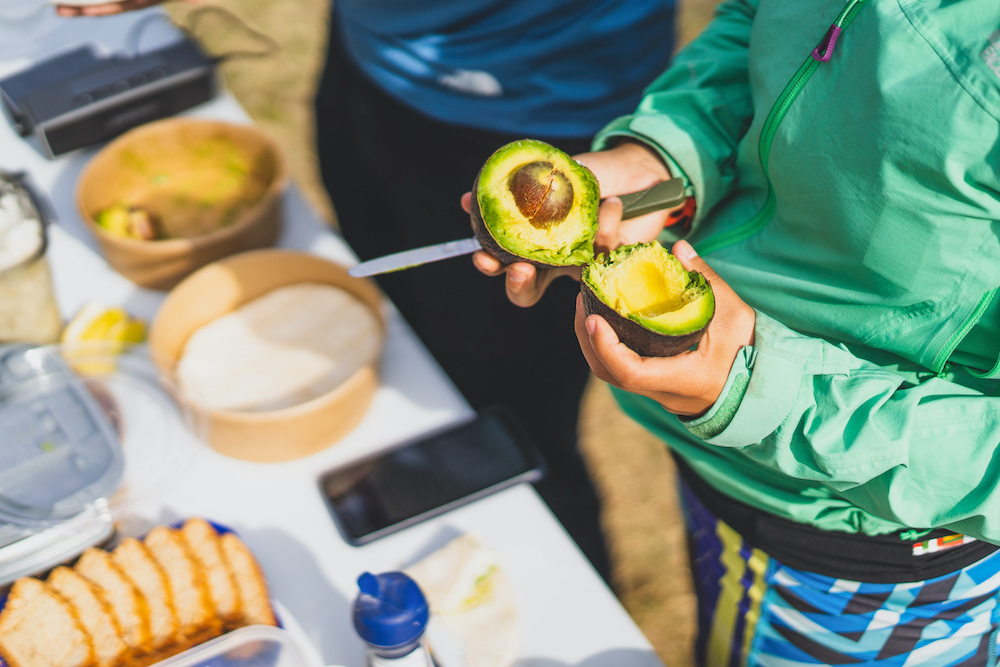
How will my pre- and post-training eating look different when eating keto?
For someone who is not following a keto diet, the “normal” way to adjust our fueling and nutrition to fit our training volume is by adding more carbs (specifically, consuming 6-10 grams/kilogram of body weight per day) on high-volume or intense days of training, and by cutting down on carbs (to 3-5 grams/kilogram of body weight per day) on a low-volume or easy day of training. (Want more info about trail running and ultrarunning nutrition? Listen to this Vert.run “Nutrition Talks” podcast where we talk about how nutrition impacts recovery for trail and ultrarunners.)
But on a keto diet, these rules of thumb go out the window. For a runner who weighs 70 kilograms and runs 3 hours per day, he or she would be consuming up to 700 grams of carbs on a normal diet–which would be almost 20 times more than recommended for being in ketosis. So, what you’ll eat to stay in ketosis while training will look very different than you’re probably used to right now.
I say all of that to help you understand exactly how different than your current diet it might look for you to run ultramarathons on a keto diet…and not just the racing part, but in your day-to-day life as an athlete.
Let’s say that your current pre-run breakfast is oatmeal with black coffee. When switching to a keto diet, your pre-run breakfast might look like: a couple of eggs, half an avocado, and some cream in your coffee. Pretty big breakfast change, eh?
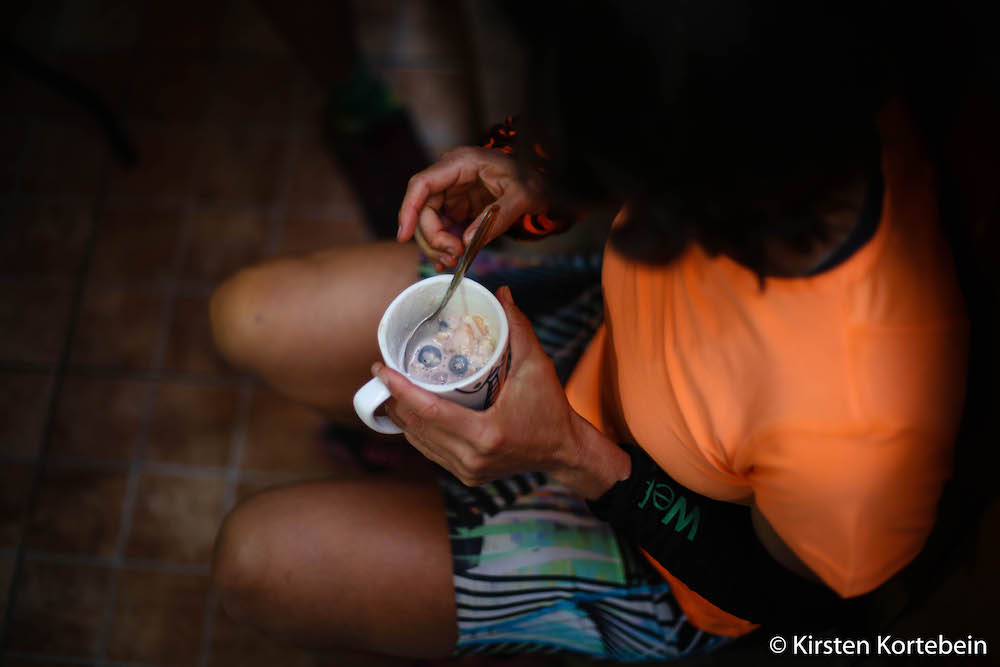
After training or for dinner, instead of opting for pizza or ice cream as a post-training treat, an Ultrarunner or Ultramarathon runner on a keto diet will be looking for more fatty foods and protein: for example, a steak; salmon; bacon; cauliflower and broccoli salad; and for dessert, some dark (like really dark) chocolate with greek yogurt.
Some examples of foods for ultrarunning on a keto diet are: all types of nuts; avocado; oils, like coconut and olive; eggs; nut butters; and chia and flax seeds. Plus, you’ll almost entirely cut out things like bread, pasta, rice, oatmeal, etc. Basically, pretty much anything that’s high-carb is a total no-go unless you’re prepping for a long race or hard training, which is basically the only time you can add slightly more carbs to your keto diet.
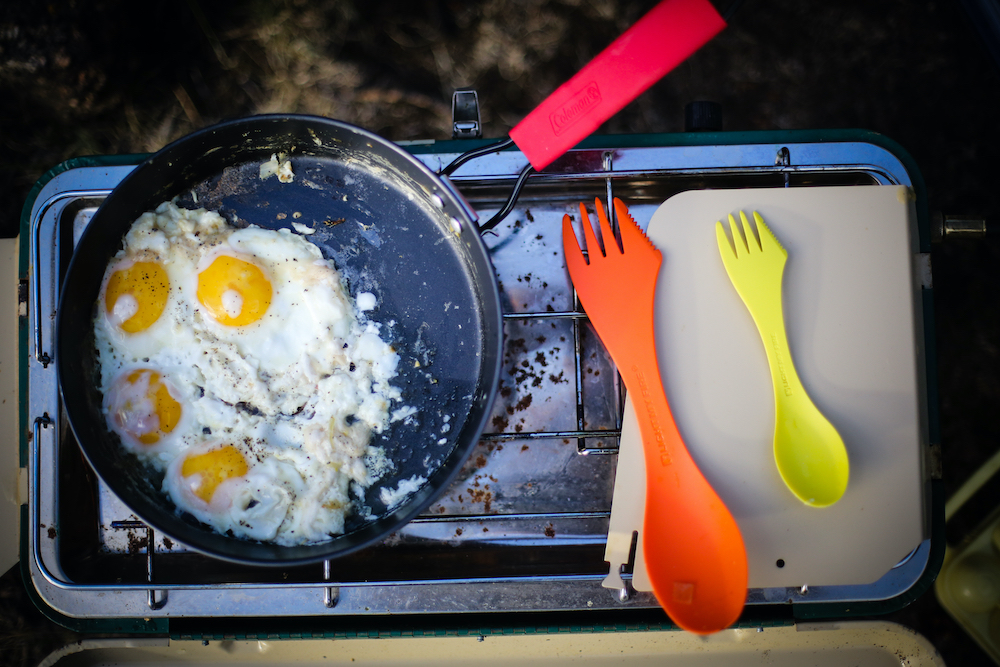
Ultramarathons on a keto diet: How will my race nutrition change on a keto diet vs. carb-based diet?
Many of us who are ultrarunners suffer from GI issues during races–so the idea of relying less on carbs/sugar (i.e. gels) probably sounds really appealing to a lot of us.
That being said, though, it’s important to remember that a keto diet is not a “magic” fix to GI problems on race day. Even when running ultramarathons on a keto diet, you’ll still need to consume some carbs in the meals prior to race day–plus, fat can also cause stomach distress when running. So you could still end up with stomach issues anyhow, even when running an ultra on a keto diet.
This is why–regardless of if you eat keto or not–training your race nutrition is absolutely key. We tell all our athletes that it’s crucial to practice your nutrition during long runs, the same way we practice using different pieces of gear or pairs of shoes. This is the best way to understand what works for you as an athlete, and gives you a better idea of how your body will react to particular foods/fuels on race day.
Let’s say that with a non-keto diet, that you aim to consume 60-90 grams of carbs per hour in a race (i.e. 200-300 calories per hour.) On a keto diet, you might consume just 40 to 60 grams of carbs per hour (i.e. 100-200 calories per hour.) Regardless, you’ll still need to put in the calories to keep moving at your ideal pace–so in the end, you’ll really need to practice eating this amount of calories during your trainings and long runs.
A lot of people think that ultrarunning on a keto diet means that you can get away with the same training volume on “no calories at all.” To some extent, this might be true–i.e. that you’ll start to be able to perform while consuming fewer calories than you’re currently used to–but it’s really important to recognize that you might end up finding that doing so leaves you under-prepared for your race, especially in terms of training your body and gut to be efficient with the calories you consume while running on the trails.

Is a keto diet a competitive advantage or disadvantage for runners/ultrarunners?
So, this is a tough question. There’s not a “black or white” answer here. There are definitely some professional endurance athletes who perform amazingly well on ketogenic diets, and there are others who perform equally well on non-ketogenic diets. As we talked about earlier, there’s no “miracle” diet that fits each runner equally.
As ultrarunners, the best option is arguably to be the most adaptable runner as possible. This means that ideally, you can and should be able to perform well using whatever’s available to you: if you’re efficient and train your body with a “little bit of both,” i.e. training your body to use fat as fuel while also training it to run well on carbs, you’ll be well-adapted to handle anything that comes your way during a long race, expedition, or other adventure…and will probably be a stronger runner for it. And when running ultramarathons on a keto diet, you will still need to consume carbs and sugar as your main fuel to keep you going…the big difference will be that you’ll probably need less than what you used to need before being on a Keto diet, so that could actually be an advantage.
Considering all this–that ultras can be unpredictable, etc.–it’s tough to say if a keto diet is an advantage for ultrarunners. It’s definitely true that being more fat-adapted can be helpful in an ultra, but it’s worth examining what that looks like for you and how it can apply to your races, i.e. as a full-on keto diet, or by simply training to be the most flexible, adaptable athlete that you can be.
Final thoughts
If you’re seriously considering switching to a keto diet, one other important thing to consider is its impacts on your social life. As an endurance athlete, chances are that you probably already make some sacrifices in your personal life in order to accommodate your training schedule and load. If you’re really thinking about going keto, remember that this might additionally complicate things like going out for dinner or drinks with friends after a long run, or with your family on the weekends.
Being in a constant ketogenic state will mean that you’ll need to stay very on top of what you’re putting into your mouth each time you eat something. This will absolutely mean that you’ll end up skipping some social meals if you can’t find what you need to eat in terms of macros (fat, protein and carb ratios in one meal) and that this can be really challenging…at the beginning, at least.
The good thing is that today, there are many products that are labeled as “keto-friendly” at restaurants and other places that serve keto meals–so from that point of view, it’s much easier to be keto now than it was five years ago.

Finally, as with everything in life, remember that seeing results takes time. If you’ve decided to give ultrarunning on a keto diet a go, and have thoroughly researched beforehand, do try to be patient and stick with it for at least six months in order to see any real, significant outcome from the change. (Be patient, just like when you’re training for an ultra!) When it comes to going keto, you’ll need to wait a while before seeing tangible results–both in terms of weight and in terms of your body’s ability to transform fat into fuel. So do be aware that this takes time; often, athletes find it helpful to explain this to friends and family. Doing so can provide you with a support system that understands that you’ll need encouragement in sticking to this for a solid six months.
Have you run an ultra on a keto diet? Or, do you train on a keto diet as an endurance runner? We’d love to hear from you, and would be really interested to hear about the benefits you’ve found it has on your running and/or everyday life.
So, to sum it all up:
Can you run ultramarathons on a Keto diet?: YES. You can.
Should you try it?: It really depends. Do your research and see if the keto diet lifestyle could fit into your current life situation.
___________________
Sources:
¹ “What Are Ketones?” WebMD. WebMD. Accessed May 26, 2020. https://www.webmd.com/diabetes/qa/what-are-ketones.
² Team, Wellness. “What 30 Days on the Keto Diet Feels Like.” Health Essentials from Cleveland Clinic. Health Essentials from Cleveland Clinic, November 22, 2019. https://health.clevelandclinic.org/weight-loss-what-30-days-on-the-keto-diet-felt-like/.

